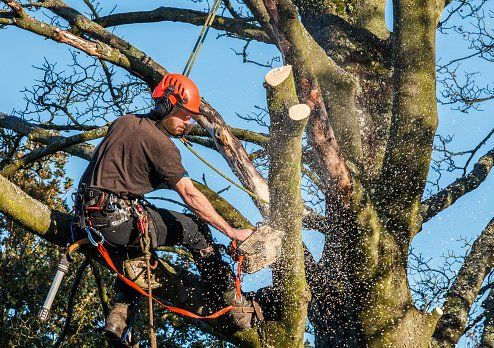How and When to Prune Your Tree
Knowing when to prune your tree can help your tree flourish
The largest trees typically grow the biggest leaves and flowers. If your tree is healthy, it probably has abundant foliage around the canopy of its branches with little or no bare branch tips visible; the tree may even look like a giant green ball from a distance. An unpruned tree will produce lots of fruit—it doesn't need help in that department because it already has the right tree structure to support an abundance of fruit. The tree can handle all that fruit because it is sturdy, upright, and balanced. If you have a tree that fits this description, congratulations! Your tree does not need any pruning unless it has dead wood or disease. There are trees that grow well with regular pruning, however. These trees can be trained to grow at specific angles and to make specific tree shapes like an open vase or umbrella tree (ficus), weeping tree (weeping willow), fan tree (hornbeam) or tree with a single trunk that grows in layers by producing suckers (bonsai). These tree varieties may not need lots of tree structure to support flowering and fruit production. A tree that has been aggressively pruned is often referred to as a "June drop tree" because it loses its leaves or fruit as soon as they develop in the spring. This tree may have been pruned hard during an early growth spurt to encourage tree training, but unfortunately tree training does not always produce tree structure and stability. Rather than continuing to load tree growth on a tree that is structurally weak, it's better to try tree training again. It could take several years for the tree to develop good, strong branch angles and trunk taper, but if you start from scratch, your tree will be healthier in the long run.
Tree pruning in the early winter months when tree branches and tree bark are less likely to be damaged by tree pruning wounds.
- tree structure and training
- tree health and stability
- tree pruning in winter
During tree pruning , tree shaping and tree trimming, it is essential to know when to do these things. There are several factors that you need to consider in order to ensure successful tree pruning .
Tree Pruning - When And Why?
The best time for tree pruning is during the tree's dormancy period, which takes place during late winter or early spring. This tree pruning time should be just before the tree starts growing again for its new season.
The most common trees that are commonly tree trimmed, shaped and pruned include the following:
- Fruit Trees - Recommended tree trimming time is after their harvest season, but just before active growth of new leaves.
- Shade Trees - Tree pruning is best done in the late winter or early spring. This tree shaping and tree trimming time optimizes tree health because this tree cutting job takes place just before the tree's period of active growth.
- Ornamental Shrubs - Tree pruning should be completed during autumn or early winter, after they have died.
- Conifer Trees - These tree pruning tree trimming and tree shaping activities should take place in autumn or early winter when the tree is inactive.
- Deciduous Trees - Tree pruning should be done in late winter or early spring, after their dormancy period but before new leaves start to grow. Note that deciduous tree pruning tree shaping and tree trimming is best done with tree loppers or tree shears, not tree pruners.
- Tropical Trees - Tree cutting should be completed in their dormant season which falls during wintertime.
- Bonsai Trees - When it comes to tree pruning , bonsai trees are no different from any tree, tree trimming tree shaping should take place in their dormant season. However tree pruning may also be done during the tree's active growth period, though this tree lopping activity will reduce bonsai tree leaves. Also note that bonsai trees are small trees, therefore it is recommended to use tree pruners instead of tree loppers.
The tree pruning tree shaping time for most trees are in either autumn, winter or early spring. Conifer tree pruning tree trimming is best done in autumn or early winter when they are inactive, while deciduous tree pruning tree cutting should be completed during late winter or early spring before new leaves start growing. Tropical tree tree pruning tree trimming should be ideally done in wintertime while bonsai tree pruning tree shaping is best done in the tree's dormant season.
Why should I prune my Tree?
Whether you're planting a tree for shade, fruit, or just to beautify your property, it's important to remember that trees require maintenance. Maintaining their health and beauty requires proper tree trimming and tree pruning at the appropriate times.
What are the Benefits of Tree Trimming and Pruning?
Pruning trees will help them live longer, healthier lives; let more light into your yard; allow more air to circulate; and keep tree branches from damaging your home, garage roof or parked cars.
Trees that have been neglected and not trimmed for a long time can become hazardous if their strong roots invade the basement walls of your house or crack sidewalks and driveways. Branches left untrimmed for a long period can allow tree limbs to die off; cause other tree limbs to grow improperly and become weak; and cause tree branches to become too heavy for the tree and fall off.
We hope this article answers some of the questions you may have about your tree, why you should prune it or how you should prune it. If you have any questions please don't hesitate to get in contact with us, to discuss your tree and what's best to encourage a long and healthy life.
You might also like
